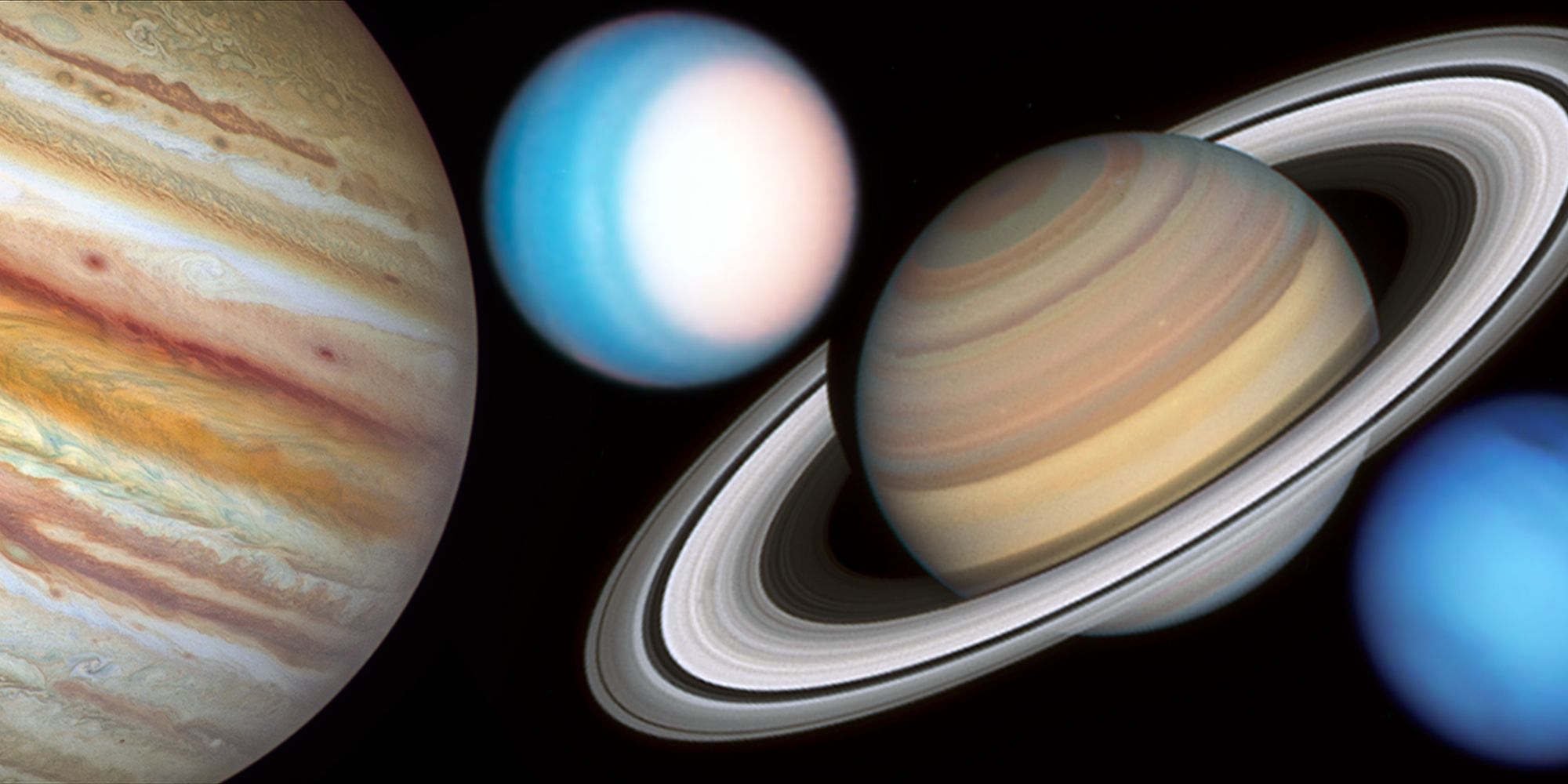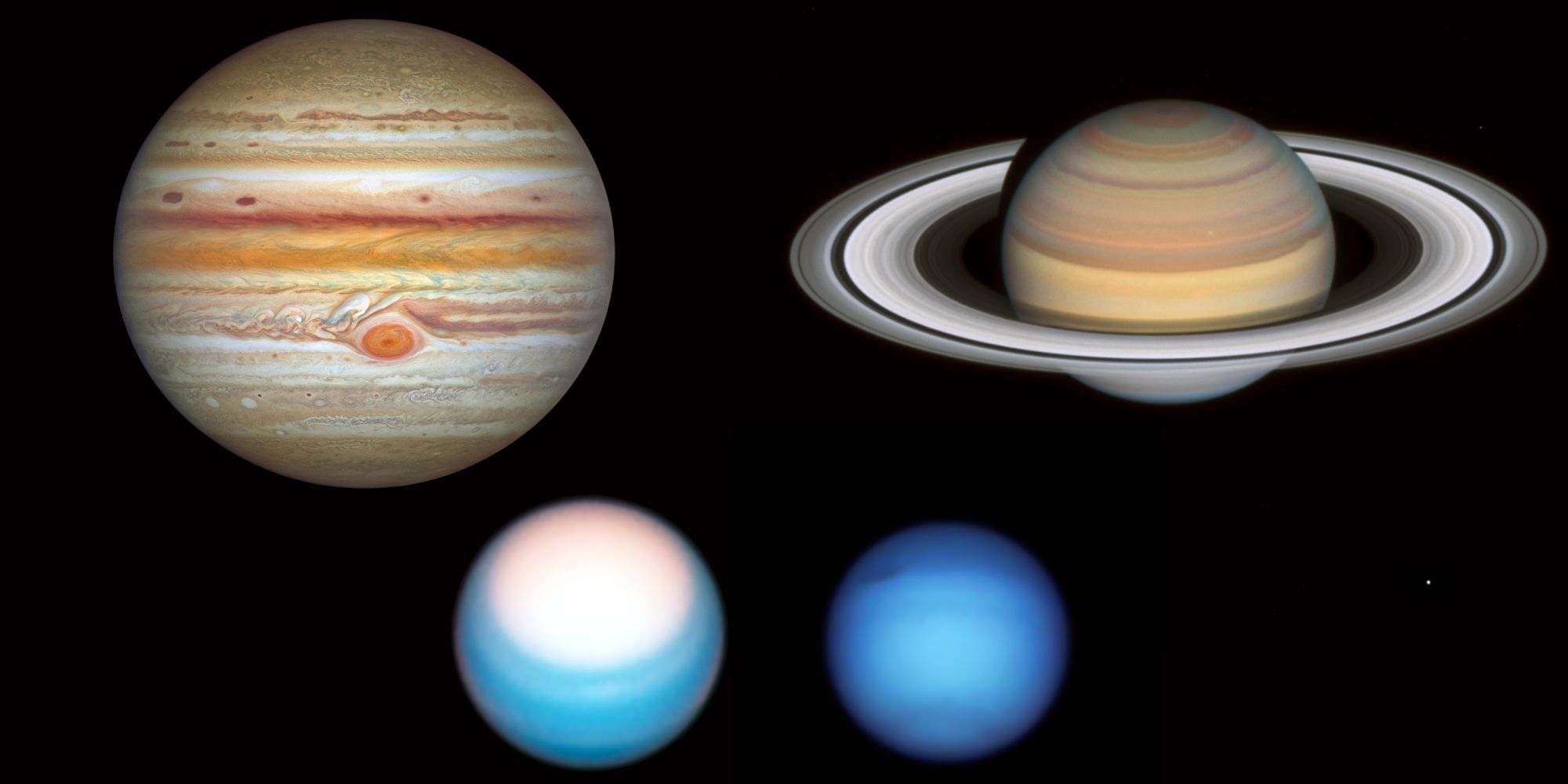NASA's Hubble telescope just completed its yearly tour of our Solar System's outer planets, and as usual, its findings are nothing short of incredible. Since its launch in 1990, Hubble's been an invaluable asset for space exploration as a whole. From studying fine details of the universe to capturing gorgeous images of its best sights, it's hard to imagine where we'd be without the telescope.
The beauty of Hubble's photos is impossible to overstate. Just take a look at some of the pictures it's shared in 2021. Earlier this week, Hubble shared a jaw-dropping image of a large nebula creating tons of massive stars. A few days before that, it shared another photo of a growing baby star covered in a mistifying blue gas. There are countless wonders of the universe waiting to be uncovered, and thanks to Hubble, we've been able to spot thousands of them.
While Hubble is often used to look at things far beyond our Solar System, it's also a great tool to check in with Earth's neighboring planets. Once per year, NASA uses Hubble to take a 'grand tour' of the outer planets in the Solar System (Jupiter, Saturn, Uranus, and Neptune) to see how they've changed over the last 365 days. Although they're already well-documented, the gaseous nature of the outer planets means they're constantly changing — both in big ways and small. With its annual tour, Hubble can examine these differences and see how the planets have evolved.
What Hubble Learned About The Planets This Year
Starting first with Jupiter, Hubble shows the planet's equatorial zone has the same dark orange color that's been present for a while now. Scientists expected this area of Jupiter to return to the white/beige color it once had, making the persistent orange hue fairly surprising. Moving above Jupiter's equator, Hubble reveals new storms on the planet. Some of the storms appear very clearly, whereas others are much fuzzier. As NASA explains, this is due to "the properties within the clouds of the vortexes."
Then we have Saturn. Hubble's latest photo of the planet shows "rapid and extreme color changes of the bands in the planet’s northern hemisphere." A particularly noteworthy finding in the 2021 photo is Saturn's hexagonal storm. The iconic storm was seemingly hidden in 2020's picture, but this year, it's on full display again. The picture also shows Saturn's southern hemisphere during its winter season, as seen by the blue-ish color by the planet's south pole.
Last but certainly not least, let's check in with Uranus and Neptune. Uranus is currently experiencing its spring season in the northern hemisphere — as evident by a brighter polar region thanks to increased ultraviolet radiation from the Sun. This characteristic of Uranus is one that puzzles scientists. Even when this area gets brighter, NASA says the "sharp southernmost boundary remains fixed at the same latitude." This is something that's been persistent with Uranus for several years. One possible explanation is that a jet stream on the planet acts as a barrier, but scientists can't say for sure. As for Neptune, Hubble found that its unique dark spot is still clearly present. Hubble also captured "a notable dark, elongated circle encompassing Neptune’s south pole." Not all of these changes can be immediately explained, but what they do confirm is that planets in the Solar System aren't solitary things. Whether it be an evolving storm or a mysterious color change, these planets always have something new to show off.
Source: NASA


